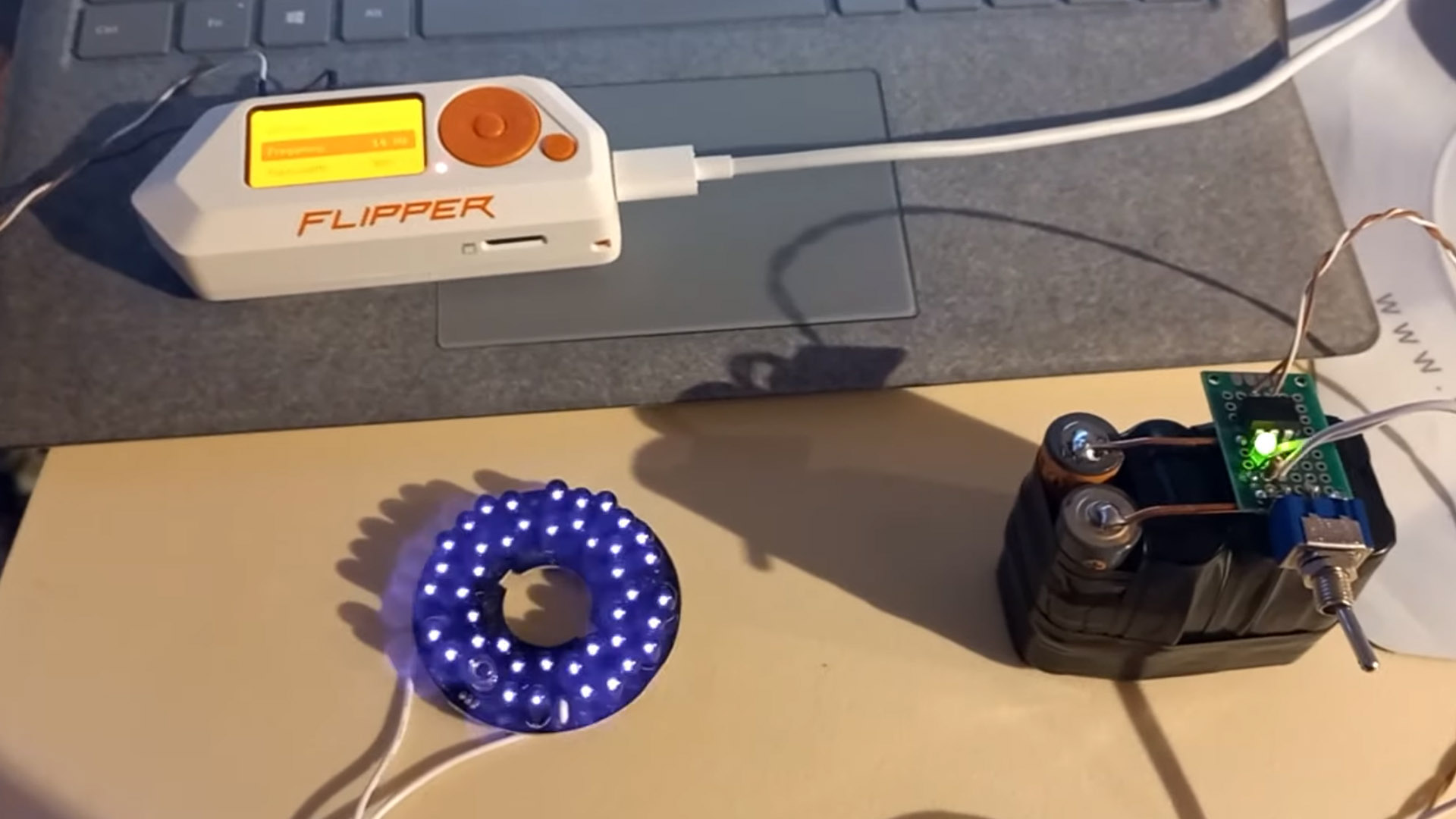

We’ve talked about this tiny gadget before: the Flipper Zero. Officially, it’s a $170 tamagotchi-fied hacking gadget with a sub-gigahertz radio and some accessory pins. Unofficially, it’s a menace’s best friend.
Most recently, one tinkerer named Peter Fairlie took to YouTube armed with a Flipper Zero to answer a repeatedly asked question: can the device change a traffic light from red to green? As it turns out, the answer is “yes,” but not in the way you might think.

As mentioned earlier, the Flipper Zero has a built-in sub-GHz radio that lets the device receive data (or transmit it, with the right firmware in approved regions) on the same wireless frequencies as keyfobs and other devices. Most traffic preemption devices intended for emergency traffic redirection don’t actually transmit signals over RF. Instead, they use optical technology to beam infrared light from vehicles to static receivers mounted on traffic light poles.
Perhaps the most well-known branding for these types of devices is called Opticom. Essentially, the tech works by detecting a specific pattern of infrared light emitted by the Mobile Infrared Transmitter (MIRT) installed in a police car, fire truck, or ambulance when the MIRT is switched on. When the receiver detects the light, the traffic system then initiates a signal change as the emergency vehicle approaches an intersection, safely redirecting the traffic flow so that the emergency vehicle can pass through the intersection as if it were regular traffic and potentially avoid a collision.

Because the RF radio in the Flipper won’t work in this scenario, Fairlie instead looks to the device’s General-Purpose Input/Output (GPIO) pins. The Flipper Zero can actually generate electrical pulses to these GPIO pins, and its built-in frequency generator can determine how quickly the pulses are sent. This allows the Flipper to control an external set of infrared LEDs sourced from an old security camera (along with an optocoupler and separate battery pack) by pulsing the lights at 14 Hz—or, 14 cycles per second—effectively mimicking an Opticom transmitter without complex hardware or programming.
One doesn’t necessarily need a Flipper to build one of these devices. Theoretically, the same device could be cobbled together out of custom circuitry. In fact, they have been in the past—see the DIrtY MIRT. But the Flipper packages everything up in an easy-to-use device that can be repurposed for other legitimate shenanigans.

For the record, building and using one of these transmitters as a member of the general public isn’t exactly a good idea nor is it legal It’s best treated like something read in The Anarchist’s Cookbook unless you want to end up in prison for six months, that is. But for those in a position where they are authorized to use the devices as part of their work, Fairlie’s example serves as a low-cost proof of concept for agencies that don’t have tons of cash to spend on first-party transmitters.
“My video is a proof of concept,” Fairlie said. “I received feedback from a volunteer fire department that was looking for a low-cost solution to equip their personnel with. The 3M OptiCom units that GTT sells to city fire [departments] cost $5,000 each. Not all fire departments have that kind of money to spend on MIRT devices.”
To top it all off, these do-it-yourself MIRTs aren’t guaranteed to work either. Many cities with newer traffic preemption systems configure them so they are encoded and log the vehicle requesting the preemption, as well as when failed and successful preemption attempts are made. But hey, it’s fun to dream about never hitting a red light again, right?
Got a tip or question for the author? Contact them directly: rob@thedrive.com